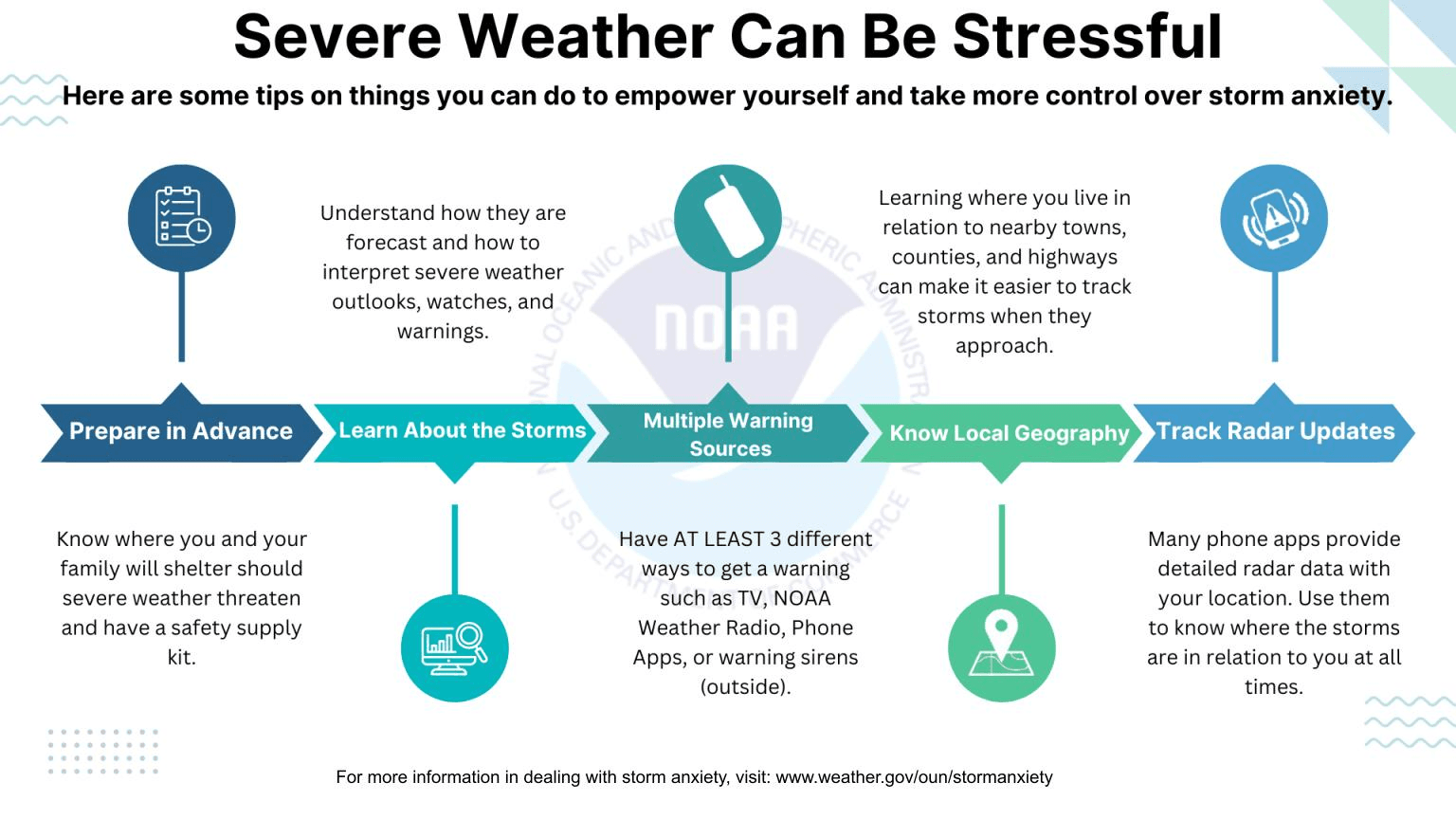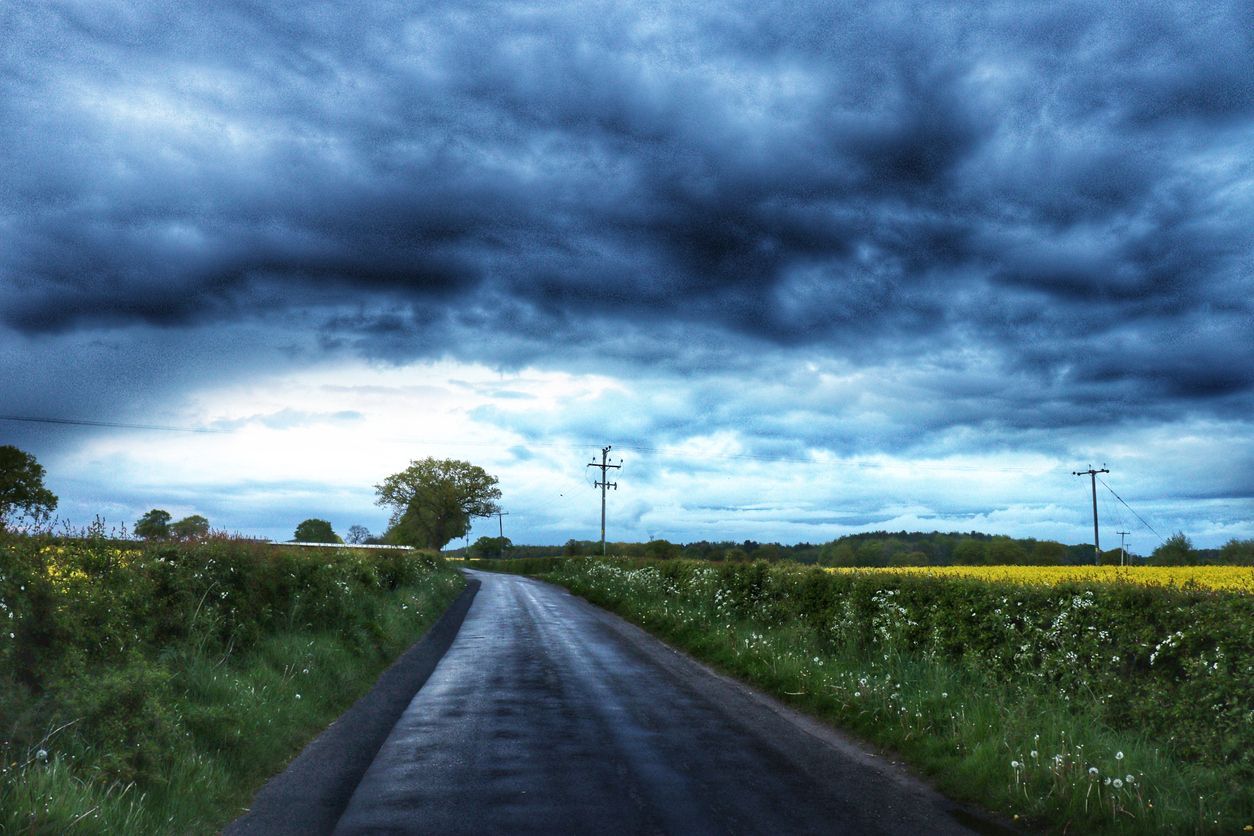In Nebraska, the warming temperatures of March, April and May can see 80° days, a blizzard that dumps a foot of snow, a tornado that destroys everything in its path for miles, or thunderstorms with enough rain to cause severe flooding. Summer brings hail, thunder, lightning, and the possibility of tornados and flooding.
Because Nebraska weather is so unpredictable, the best time to prepare is before a weather-related disaster strikes.

Stay Aware
- Know severe weather terms. A watch means severe conditions are possible. A warning means severe conditions have begun or will begin soon.
- Stay up-to-date on the latest conditions. In Platte County/Columbus, register your cell or VOIP phone here to receive emergency alerts and severe weather warnings that could impact you.
Get Ready
- Make a plan to connect during severe weather by text, e-mail, social media & cell. Learn how to create a plan at https://www.ready.gov/plan A fillable form is available for you to fill in and download.
- Pack an emergency kit for each person and pet traveling in your car in case evacuations are ordered. Pet kit ideas can be found here. Find a printable emergency supply list at https://www.ready.gov/kit.
- Drills aren’t just for your toolbox. Practice emergency drills with your family regularly.
- 30: The number of days it takes for flood insurance to begin. Don’t wait until it’s too late! Learn more here.
- Tornado survivors say having a plan on where to take cover saved their life. Tornadoes can occur with almost no warning. Where will you take cover? Learn more about staying safe during a tornado at https://www.ready.gov/tornadoes.
- Take time now to safeguard critical documents and take pictures or videos of your belongings. Click https://www.ready.gov/financial-preparedness for other financial preparedness and recovery tips.
Safety During:
Floods
Flooding is a temporary overflow of water onto land that is normally dry. Floods are the most common natural disaster in the United States. Failing to evacuate flooded areas or entering flood waters can lead to injury or death.
Floods may:
- Result from rain, snow, coastal storms, storm surges and overflows of dams and other water systems.
- Develop slowly or quickly. Flash floods can come with no warning.
- Cause outages, disrupt transportation, damage buildings and create landslides.
If you are under a flood warning:
- Learn what to do before, during & after a flood by visiting https://www.ready.gov/floods.
- Evacuate immediately, if told to evacuate. Never drive around barricades. Local responders use them to safely direct traffic out of flooded areas.
- Contact your healthcare provider If you are sick and need medical attention. Wait for further care instructions and shelter in place, if possible. If you are experiencing a medical emergency, call 9-1-1.
- Listen to EAS, NOAA Weather Radio or local alerting systems for current emergency information and instructions regarding flooding.
- Do not walk, swim or drive through flood waters. Turn Around. Don’t Drown!
- Stay off bridges over fast-moving water. Fast-moving water can wash bridges away without warning.
- Stay inside your car if it is trapped in rapidly moving water. Get on the roof if water is rising inside the car.
- Get to the highest level if trapped in a building. Only get on the roof if necessary and once there signal for help. Do not climb into a closed attic to avoid getting trapped by rising floodwater.
Tornadoes
Tornadoes are violently rotating columns of air that extend from a thunderstorm to the ground. Tornadoes can destroy buildings, flip cars, and create deadly flying debris.
A tornado can:
- Happen anytime and anywhere.
- Bring intense winds, over 200 miles per hour.
- Look like funnels.
If you are under a tornado or severe weather warning:
- Go to a safe shelter immediately, such as a safe room, basement, storm cellar or a small interior room on the lowest level of a sturdy building.
- Stay away from windows, doors, and outside walls.
- Do not try to outrun a tornado in a vehicle if you are in a car. If you are in a car or outdoors and cannot get to a building, cover your head and neck with your arms and cover your body with a coat or blanket, if possible.
- Do not go under an overpass or bridge. You’re safer in a low, flat location.
- Watch out for flying debris that can cause injury or death.
- Use your arms to protect your head and neck.
- If you can’t stay at home, make plans to go to a public shelter.
- Once the all-clear has sounded, stay clear of fallen power lines or broken utility lines.
Lightning Safety
Outdoor Safety
- No outdoor location is safe during a thunderstorm.
- Plan ahead and stay informed about the weather.
- Seek immediate shelter in a sturdy building or enclosed vehicle when thunder is heard.
- Avoid seeking shelter in non-sturdy shelter.
- Wait at least 30 minutes after the last thunder before resuming outdoor activities.
Outdoors - But Safe Shelter is Not Nearby
If safety indoors is not an option, there are methods to reduce the risk of being struck. However, it's crucial to acknowledge that outdoor environments do NOT provide complete safety. Prior to venturing outside, stay informed with the latest forecast.
- Avoid open fields, elevated areas, and tall, isolated objects like trees and telephone poles.
- If camping, seek shelter in valleys or ravines; tents do not provide protection.
- If in a group, spread out to minimize the risk of lightning traveling between individuals.
- Move away from water and wet items immediately, and avoid objects that conduct electricity, such as power lines and fences.
Indoor Safety
- Avoid direct contact with electricity sources, such as plugged-in appliances.
- Refrain from using plumbing facilities, including washing hands, bathing, or washing dishes.
- Keep away from windows, doors, and porches.
- Avoid lying on concrete floors or leaning against concrete walls.
- Ensure the safety of pets by not leaving them in dog houses or chained outside.

